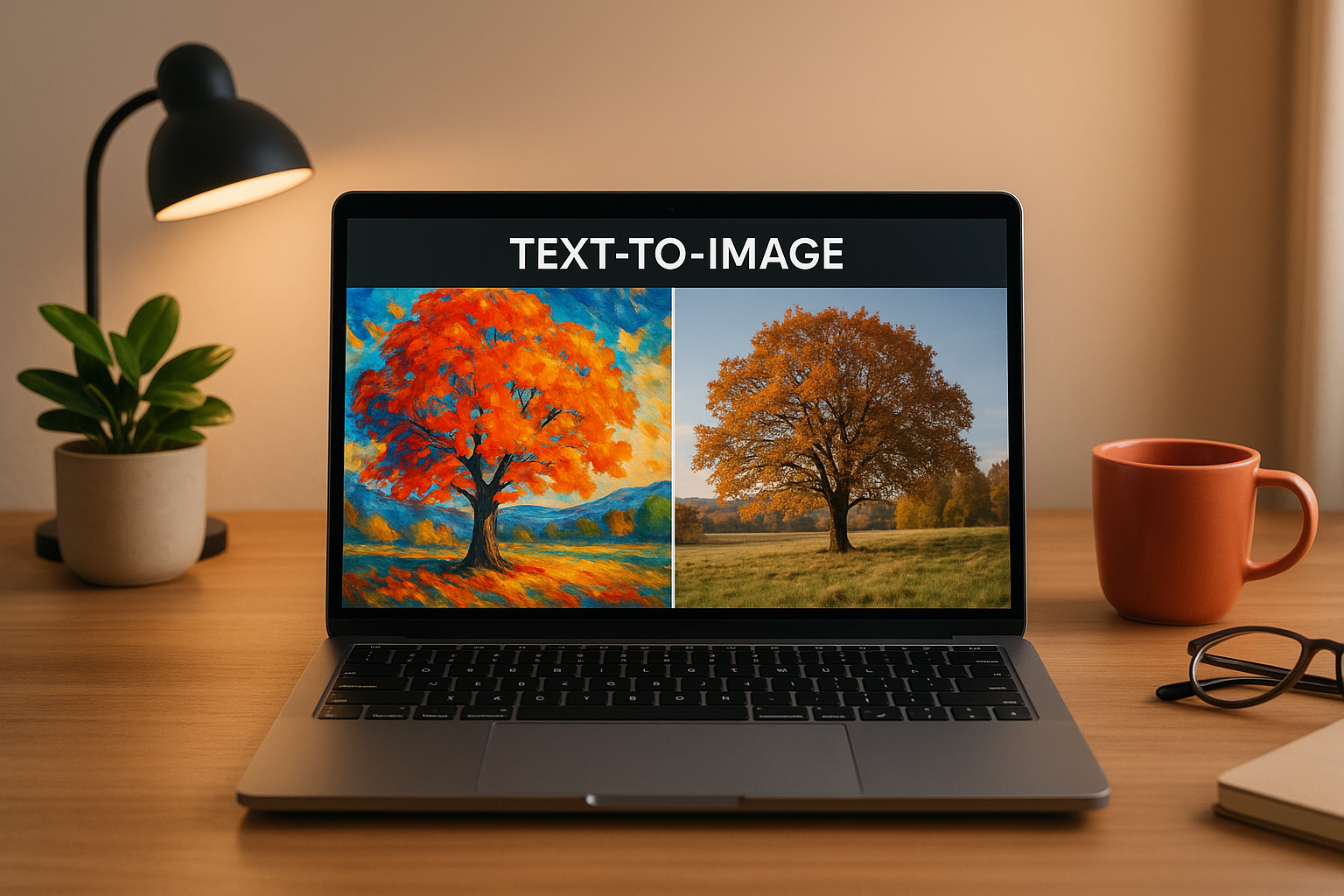What is Text-to-Image and How Does It Work?
Artificial intelligence is changing the way we create visual content. One of the most fascinating innovations in this field is Text-to-Image — technology that turns written descriptions into realistic or artistic pictures. But how does Text-to-Image work, and how can it be used in practice? Let’s explore, using DubSmart as an example.
What Is Text-to-Image?
Text-to-Image is a form of neural image generation from text, where an AI model interprets a text prompt (like “a futuristic city at sunset”) and creates a matching image.
This process is based on deep learning and neural networks trained on millions of image–text pairs. The model learns how words relate to visual elements, enabling it to generate images that accurately reflect the meaning of your description.
At DubSmart, this technology powers creative tools that help users visualize ideas instantly — from marketing content and product concepts to video illustrations and social media visuals.
How Does Text-to-Image Work?
To understand how Text-to-Image works, let’s look at the process step by step:
- Text Understanding – The system processes your prompt using natural language processing (NLP) to extract meaning and context.
- Latent Space Mapping – The AI translates words into a mathematical “latent space” where text and visual concepts coexist.
- AI Image Generation – A neural text-to-image model (such as diffusion or transformer-based architecture) generates an image that matches the prompt.
- Refinement – The model refines textures, colors, and composition to ensure realism or a chosen artistic style.
DubSmart uses advanced text-to-image models optimized for speed and clarity. Whether you need realistic photos or creative illustrations, the system adapts to your goals.
Applications of Text-to-Image
The applications of Text-to-Image are growing rapidly across industries:
- 🎨 Design & Marketing – Instantly generate ad creatives or visual concepts.
- 🎬 Video Production – Create backgrounds, storyboards, or visual assets for dubbing and localization projects.
- 📰 Content Creation – Illustrate blog posts and articles with AI-generated visuals.
- 🧠 Education & Research – Visualize abstract ideas, data, or concepts.
- 💡 Product Development – Prototype designs or branding elements before production.
With DubSmart, users can combine Text-to-Image with Text-to-Speech and AI dubbing — creating a complete workflow for multilingual video and content production.
Advantages of Text-to-Image
The advantages of Text-to-Image technology are clear:
- ⚡ Speed – Generate visuals in seconds, without design skills.
- 💰 Cost-efficiency – Reduce expenses on photography or stock images.
- 🎯 Creativity – Experiment freely with concepts and styles.
- 🌍 Scalability – Produce thousands of visuals for global campaigns.
- 🔒 Privacy – DubSmart runs generation securely in the cloud, keeping your data protected.
Text-to-Image Examples
Here are some Text-to-Image examples created with DubSmart prompts:
- “A young woman recording a podcast in a modern studio” → realistic media photo
- “A robot painting a landscape with oil colors” → artistic AI concept
- “Minimalist app UI in light blue tones” → interface mockup
Such flexibility makes DubSmart an all-in-one creative assistant for brands, creators, and developers.
Why Choose DubSmart for Text-to-Image
DubSmart combines AI dubbing, Speech-to-Text, Text-to-Speech, and Text-to-Image into a unified platform. This means you can generate, voice, and localize multimedia content all in one place — quickly and with professional quality.
Whether you need visuals for marketing, AI dubbing assets, or creative illustrations, DubSmart’s Text-to-Image tool delivers fast, accurate, and visually stunning results.
Conclusion
Text-to-Image technology represents the future of visual creation — transforming words into pictures through the power of AI.
With DubSmart, you can bring ideas to life faster, scale your creative output, and build richer multimedia experiences.
